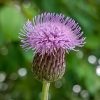Seralini Rat Study Revisited
Anyone interested in the GMO debate has probably heard about the Seralini paper that I criticized a while back. That paper was eventually retracted by the original journal, and it has now been re-published in a different journal. There are quite a few articles describing the background, so I won’t get into those details. I suggest reading recent pieces at Retraction Watch or Grist if you want to get the background information. The Seralini press release for the re-published article states “The raw …
Seralini Rat Study Revisited Read More